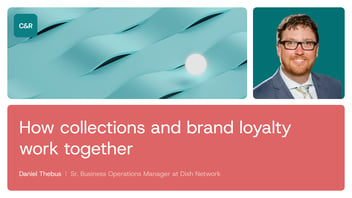The rising use of BNPL payment plans and increasing cost of living has led to unprecedented rates of delinquency. So much so that Bloomberg reported Americans have almost $1 trillion in credit card debt, which included a $61 billion increase between 2021 and 2022. Because of this, more people than ever are entering the collections process, requiring credit issuers to become more efficient and able to process increased volumes without negatively impacting the customer experience.
Technology and segmentation play major roles in the successful solution. It gives collections teams the ability to accelerate, enrich and enhance treatment and contact strategies through the use of Machine Learning and AI. McKinsey reports that using large sets of customer data and machine learning can reduce losses by as much as 5% within 3 months. Moreover, it provides clear visibility of the financial situations customers are facing, facilitating personalized solutions at scale, which greatly enhances collections performance.
What is customer segmentation?
Customer segmentation drives collections performance through the use of integrated data and AI-powered tools. It gives you the ability to separate accounts into designated groups and automate treatment paths based on account characteristics. To do this, you need a configurable collections platform that provides a holistic view of customer data and characteristics; these can range from demographic information, collections/account activity, payment frequency and more. These are then interpreted by machine learning tools to segment accounts into risk-based groups.
Segmented groups are automatically assigned to treatment plans configured by your team using predetermined workflows. Better yet, efficient platforms can analyze data on the effectiveness of collection team members and assign them to specific groups that need guidance and support. For example, a high-risk group may require direct contact from collection team members to resolve complex situations, whereas low-risk groups will likely respond positively to a simple SMS message. Segmentation not only gives you visibility of your customers and their financial situation, it provides you with automated solutions that improve efficiency and collection performance.
What are the benefits of customer segmentation?
Efficient processes
With dated collection processes, platforms and strategies, it can be hard to spot inefficiencies at different stages. This is especially true when managing a large quantity of delinquent accounts with varied factors that have led to their situation. Failing to understand the context behind their delinquency and applying it throughout the process often results in a diminished response.
With customer segmentation, you’ll have opportunities at each stage of the collections process to improve efficiency. An early-stage collection workflow can identify potential self-cures so that agents can focus on high-risk accounts and reduce compound roll rates. Late-stage collections workflows focus on maximizing collections via automation and AI. You can decide the best approach to optimize and enhance your collections process and improve the experience of your customers.
Customer-centricity
A key aspect of the modern collection process is customer centricity. You need to identify customers who feel isolated and are struggling at different stages of the treatment plan. Otherwise, they can face a stressful experience that makes repayment less likely and damages brand reputation. This can be a challenging hurdle for conventional systems without segmentation capabilities.
The analytics and machine learning that are integrated in customer segmentation drives the appropriate workflow for each account group. By utilizing historical data and analytics in combination with omnichannel orchestration, you can not only see which customers are struggling, but quickly develop a treatment plan that simplifies the process and makes payment more manageable. The result is a process that not only guides customers through their collection process, but gives you the ability to efficiently hit important KPIs.
Utilize a configurable platform that has vast segmentation capability
To manage the rising number of accounts entering the collections process, segmentation provides efficiency opportunities and an improved experience for customers. To achieve this, you need a configurable platform that provides you with visibility of your customers and the tools to action individual solutions for different accounts.
Debt Manager is a configurable collections platform that provides customer visibility and the tools to introduce automated workflows and launch hyper-personalized campaigns. You can leverage artificial intelligence and machine learning to present insights, analysis, and reports that improve treatment plan outcomes and enhance collections performance. To learn how Debt Manager can bring efficiency to your own process, contact a member of our team today






